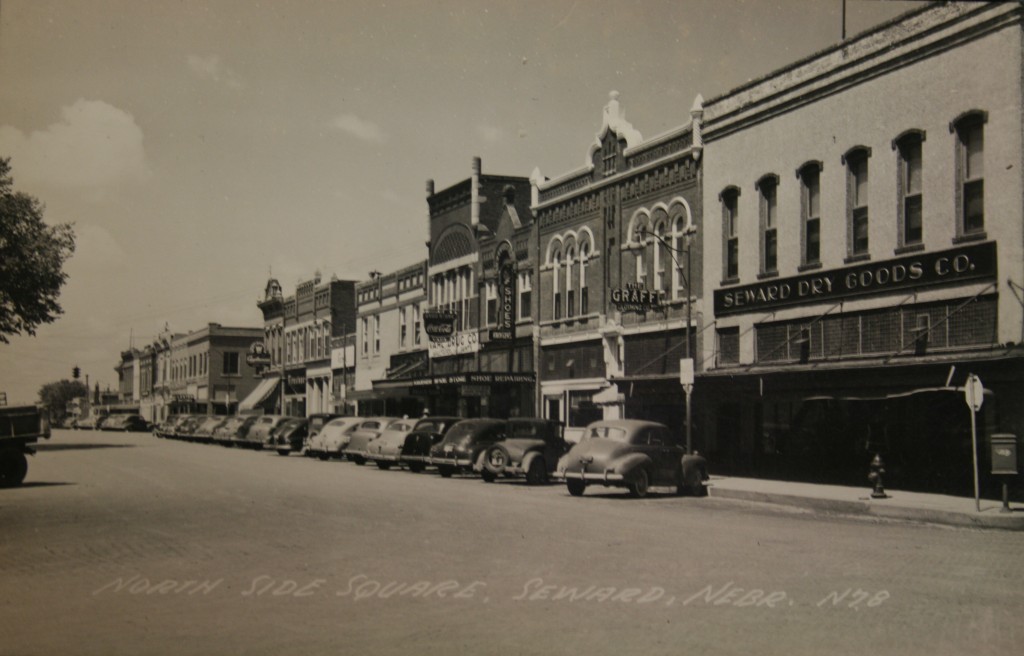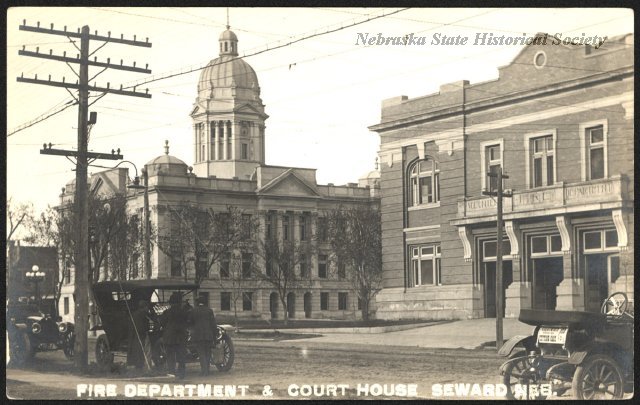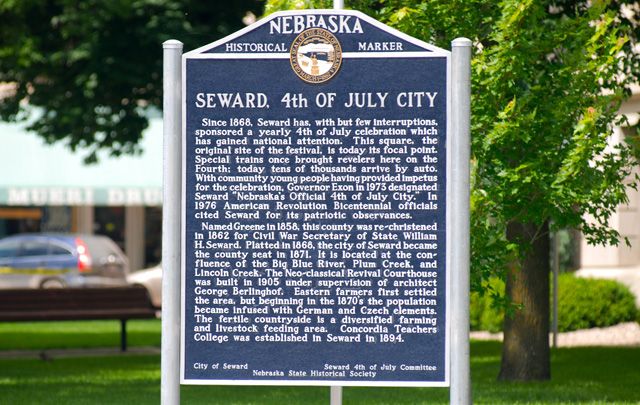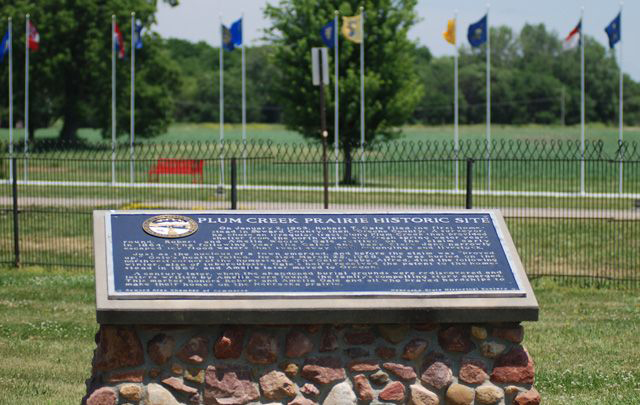History of Seward
History of Seward
In 1865, Mr. Lewis Moffitt, pioneer and founder of the City of Seward, purchased some choice land. He built a two‑room cabin for his family, which then served as a meeting place and lodging for newcomers. On April 1, 1867, the City of Seward was established. The City of Seward was incorporated on April 5, 1870. The City was named after the County of Seward which was named “Seward” in honor of William Henry Seward, Secretary of State under President Lincoln.
The First Fourth of July celebration took place on July 4, 1868. A flag‑pole was planted in the center of the public square and the ladies of the town, with patriotic hands, made a banner of stars and stripes, which were unfolded to the breeze. Squire Ward, the Justice of the town, delivered the oration of the day, and at mid‑day, the festivities were concluded and the happy participants, about twenty in number, including the entire population of the town, had returned to their homes.
The City of Seward continues on with the tradition of celebrating the Fourth of July. In fact, in a proclamation signed by Governor J. James Exon on March 27, 1973, the City of Seward was proclaimed to be “Nebraska’s Fourth of July City”; and on May 20, 1979, Senator Edward Zorinsky proclaimed the City of Seward to be “National Fourth of July City ‑ Small Town U.S.A.”
Seward County Courthouse Square Historic District
“The Seward County Courthouse Square Historic District is one of the finest nineteenth and early twentieth century commercial districts. The district’s focus is the three-story, limestone courthouse, constructed 1904-6, and designed in the County Capitol form by architect George A. Berlinghof. Other noteworthy buildings include the 1887 Tishue Block; the J. F. Goehner Building, built in 1908; and the Zimmerer-Rolfsmeier Building, built about 1920. Public buildings and structures, such as the Carnegie Library, City Hall, and the Bandstand Park, are also found in the district.”
“Roughly located in the center of the county, Seward was platted in 1868 and emerged as the county seat after a bitter fight that was not concluded until 1871. Soon after the community was platted, W.H. Tuttle built the Commercial Hotel and Beaty & Davis opened a general store. Growth was rapid after the county seat issue was settled and the Midland Pacific Railroad line was completed in 1874.
Seward possessed many of the trappings of a well-developed city by the mid 1890s. During the period, a YMCA (SW09-173) and a Carnegie Library were constructed (SW09-172). The city no longer possessed a pioneer town appearance as represented by its fifty-two blocks of paved streets and twenty miles of board and paved sidewalks. Utility services included electricity from the local light plant and water from a municipal waterworks. Telephone service also was in operation by the 1890s.
The downtown commercial district evolved around a public square, which became the site of the Seward County Courthouse (SW09-093) in 1906. This district served the city’s two thousand residents with a wide variety of enterprises. Soon a number of ornate and substantial buildings were constructed to house these enterprises. Notable examples include the Zimmerer Hardware Store Building (SW09-136), the Tishue Block (SW09- 147) and the I.H. Feary Building (SW09-175). Many of the city’s businessmen also constructed large houses in the community. Those owned by the Jones (SW09-074) and Cattle (SW09-006) banking families are examples.”
— Seward County: Nebraska Historic Buildings Survey (2007). The Heritage Research, Ltd. Prepared for the Nebraska State Historical Society. Additional information about the Historic Seward Square can be found in the application for the National Register of Historic Places.
More information about Seward, Nebraska history can be found by clicking the links below.
Seward County Courthouse
County Court House and Fire Dept. (current City Hall) circa 1910. Image courtesy of the Nebraska State Historical Society.
4th of July City Historic Marker
The Seward, 4th of July City Nebraska Historical Marker is located on the southwest corner of the Courthouse lawn.
Courthouse Square Historic District
The north side of the Seward, Nebraska Courthouse Square.






